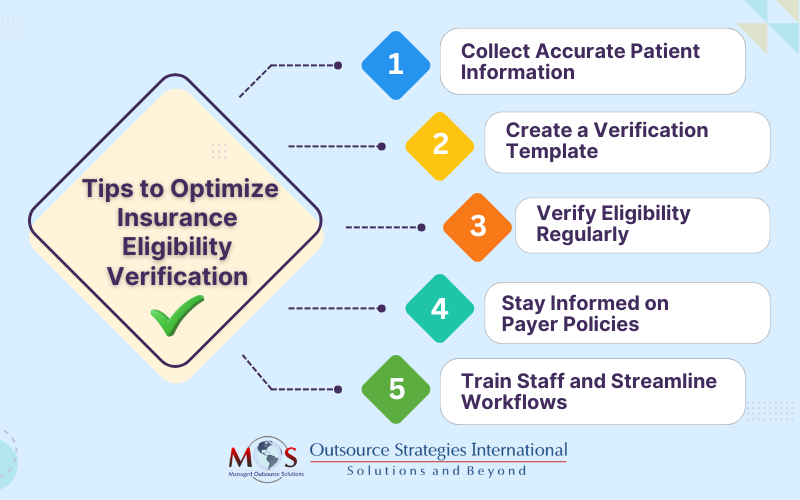In the healthcare sector, where providers need to deliver excellent patient care while ensuring financial stability, insurance verification and authorization services play a critical role. Without accurate insurance details, claim denials can arise even after the delivery of excellent care. Verification of patient benefits can help validate a patient’s coverage and eligibility before services are rendered. Successful billing relies on confirming key details like insurance ID, policy number, coverage period, co-payments, deductibles, and preauthorization requirements to minimize denials and ensure smooth reimbursement.
Optimize your billing and reduce denials with our reliable insurance eligibility verification services!
Tips for Checking Patient Eligibility
Following these best practices when conducting insurance eligibility checks can optimize the process:
- Collect Accurate Patient Information
Start by gathering complete and precise patient demographics, including insurance details. Utilize patient portals and digital intake forms to collect necessary information ahead of time. Real-time eligibility verification can provide instant insights into a patient’s insurance coverage.
- Create a Verification Template
Verifying insurance involves more than just confirming coverage dates. Best practice is to develop a checklist to use during each verification. This will ensure that all the necessary details are collected.
- Verify Eligibility Regularly
Make it a priority to check insurance eligibility before every patient visit. This approach ensures smooth claims submission and payment, while also helping patients understand their financial responsibilities at the outset.
- Stay Informed on Payer Policies
Familiarize yourself with the policies of various insurance providers to gain a comprehensive understanding of coverage limits and documentation needs. Regularly review updates from payers to stay current on any changes that could affect your billing processes.
- Train Staff and Streamline Workflows
Educate your team on the significance of insurance eligibility checks and provide training on the tools used for verification. Streamline workflows to incorporate automated eligibility checks at the right stages, ensuring consistency and efficiency.

Efficient insurance eligibility checks are key to ensuring prompt and accurate reimbursements. Partnering with an experienced insurance verification company can optimize the process, allowing providers to focus on patient care while experts handle verification complexities. This approach can improve practice efficiency and stabilize cash flow.




